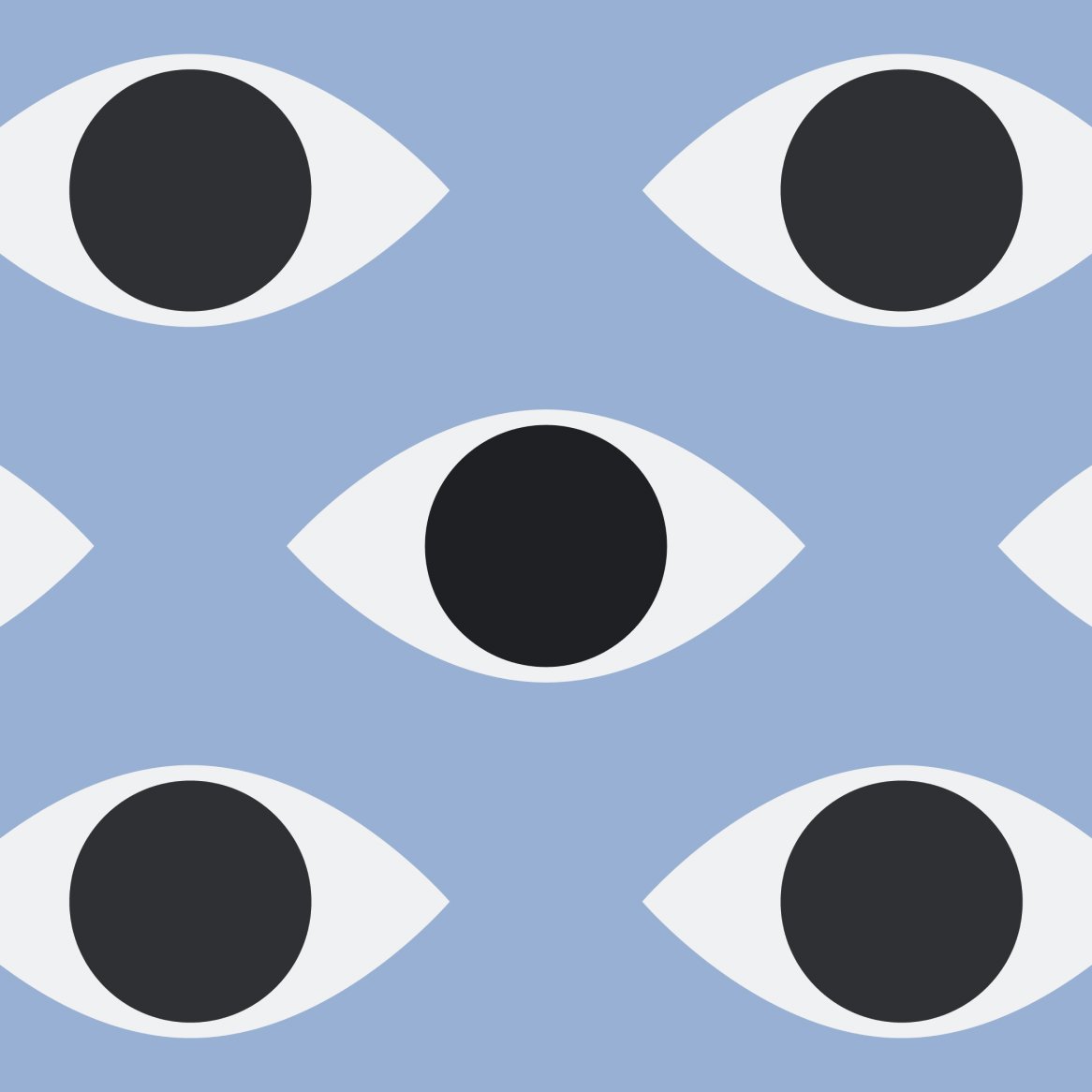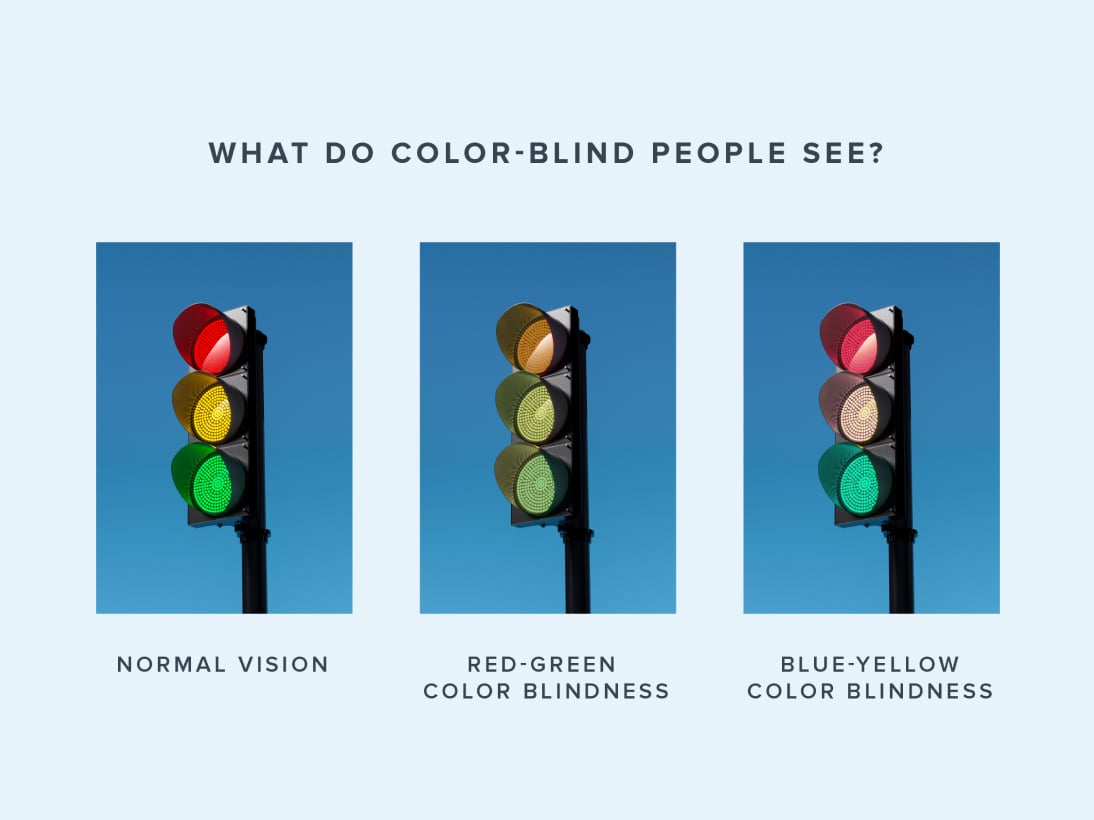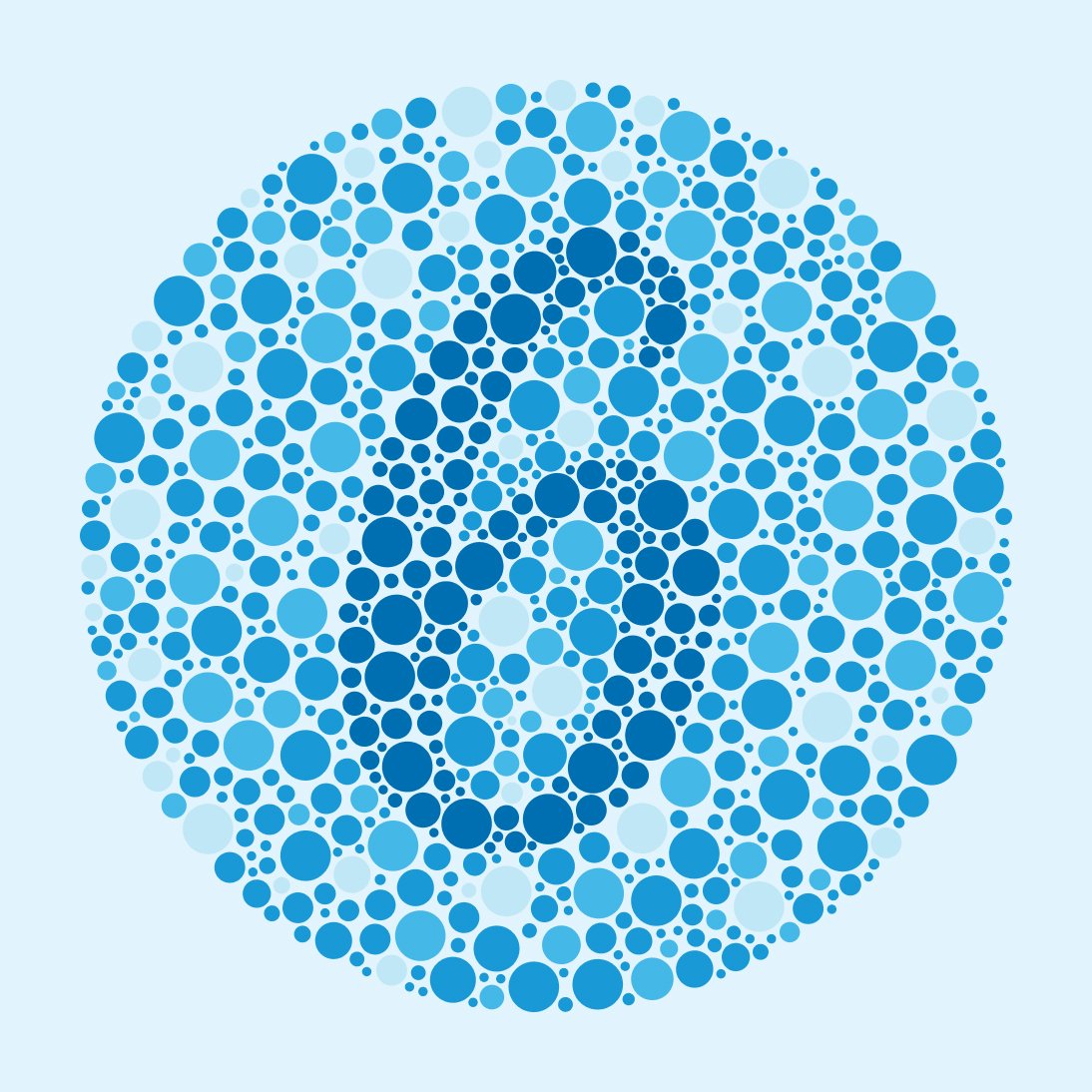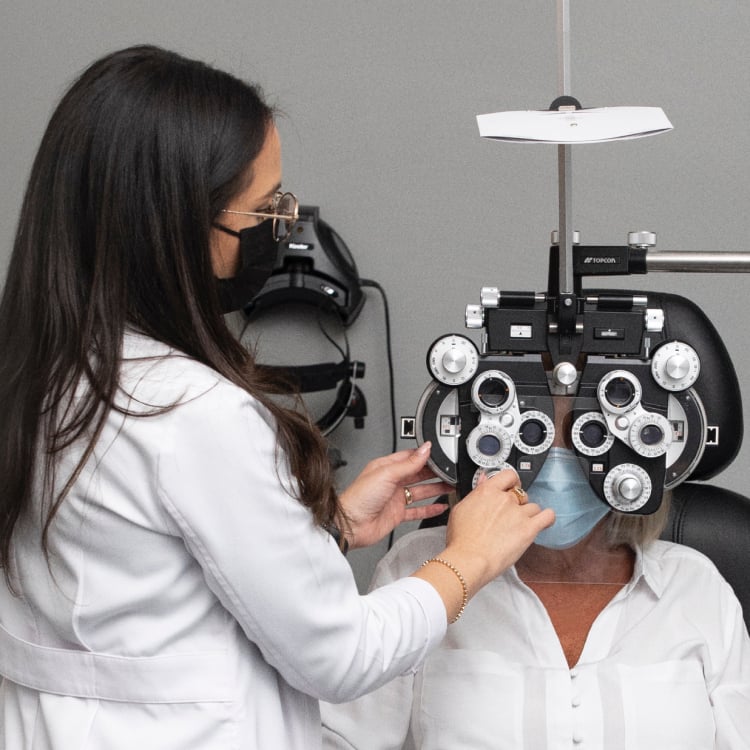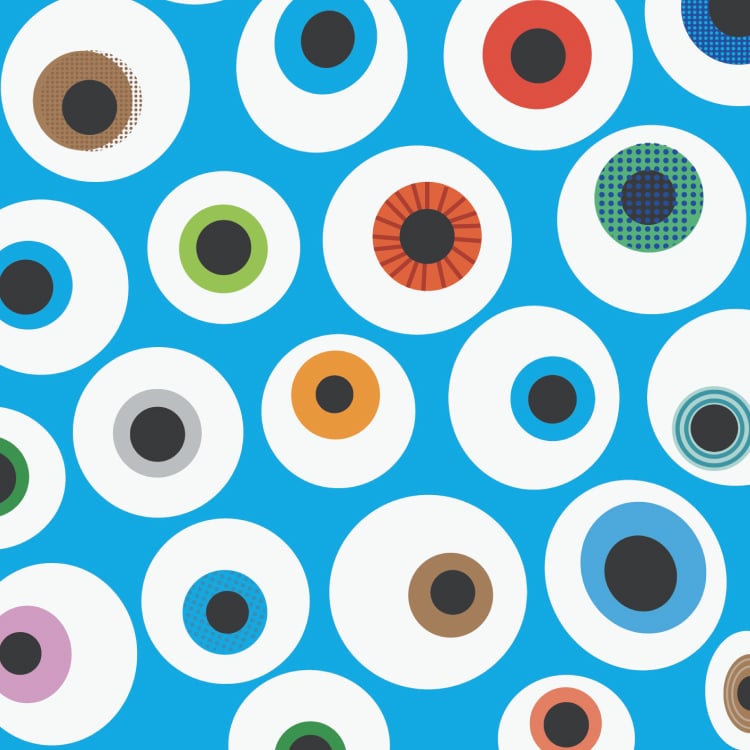Based on the name alone, it’s easy to assume color blindness is simply the inability to see color. However, this degree of color blindness is incredibly rare. Most color-blind people can actually see most colors. They just may appear differently than they do to those who can see the full spectrum of color.
So, what does a color-blind person see, exactly? We’ll answer this and some other common questions in this article. But first, let’s further explore what color blindness is, along with its causes, symptoms, and treatments.
Color Blindness Definition: What Is It?
Color blindness, also known as color vision deficiency (CVD), is a condition that makes it harder for a person to see color or perceive the difference between colors.
Color blindness occurs when one or more of the cones (cells in your retinas that detect color) in your eyes don’t work as they should.
This makes it hard for your eyes to detect colors as they usually appear.
Color Blindness Symptoms
Symptoms of color blindness vary by intensity. Someone with mild symptoms may not even know they have a color deficiency.
If you notice any of the symptoms below, make an appointment for an eye exam and/or color vision test. Here’s what to look out for:
- It’s challenging to see colors.
- It’s difficult to distinguish the difference between similar or specific colors.
- It’s hard to tell the brightness of colors.
What Causes Color Blindness?
Color blindness is often hereditary, passed down from your parents. When this happens, it’s considered a congenital condition—a condition present from birth.
When color blindness is passed down, it’s inherited as a recessive gene on the X chromosome. That’s why it’s more prominent in males—they only have one X chromosome that would need the trait, whereas women have two. Around 1 in 12 men and 1 in 200 women are color blind.
However, some people may develop issues with color later in life. Some causes of color blindness include:
- Diseases
- Drug side effects
- Exposure to certain chemicals
- Injury to the eye or brain
Who Is at Risk for Color Blindness?
There are certain health conditions and eye diseases that make you more likely to develop color blindness, including:
- Alzheimer’s disease
- Chronic alcoholism
- Diabetes
- Glaucoma
- Leukemia
- Macular degeneration
- Parkinson’s disease
- Sickle cell anemia
Are There Different Types of Color Blindness?
Yes—there are multiple forms of color blindness. The main types are red-green color blindness, blue-yellow color blindness, and total color blindness. These categories can then be further broken down into several subtypes.
To learn more, check out our comprehensive guide on types of color blindness.
What Do Color-Blind People See?
What a color-blind person sees will depend on the individual, the type of color blindness they have, and the severity of their condition.
Generally speaking, though, here’s how colors are typically affected for the main types of color blindness:
- Red-green color blindness: It’s difficult to tell the difference between any colors with red and green in them.
- Blue-yellow color blindness: It’s hard to distinguish between blue and green and yellow and red.
- Total color blindness: This form is extremely rare—it’s the inability to see any color. People with this type of color blindness only see shades of grey.
Color Blindness Treatments
For most forms of color blindness, there are no treatments that can fully restore an individual’s ability to see color normally. But there are some options your optometrist or ophthalmologist can recommend to alleviate some of the everyday inconveniences caused by color blindness.
Glasses and Contacts
There are specific glasses and even contact lenses for color blindness. These corrective lenses may help you distinguish differences between colors better.
Because there are different variations of color blindness, these may not work for everyone.
Visual Aids and Tools
Visual aids and tools can be excellent resources for assisting with color blindness. They can help you distinguish colors that you otherwise wouldn’t be able to see.
For instance, you might use one of many phone apps designed to help those with color blindness. These apps can describe the color of objects around you.
Before trying any treatment for color blindness, consult your eye doctor to determine the best options for your specific condition.
Can Color Blindness Be Cured?
No. There’s currently no cure for inherited color blindness, as that would require repairing genes.
However, for those who develop color blindness later in life, there may be solutions. For example, some individuals may develop color deficiencies after taking certain medicines. If that’s the case, quitting or changing your medications may help your color vision return. But keep in mind, this is not guaranteed in every situation.
Color Blindness Is Manageable
Depending on the severity of your color deficiency, color blindness may result in minor inconveniences or larger issues to solve. But these problems don’t have to be insurmountable. Most color-blind people still see some color and have developed strategies to help with their color deficiency.
If you suspect you might be color blind, make an appointment with your optometrist. They can help you determine if you are color blind and what form of color blindness you may have. They can also talk to you about living with color blindness—what to expect and ways to work around your condition.

